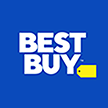Making a website beautiful is both a science and an art. While there’s no perfect formula for creating the best website that appeals to everyone (although many people certainly try), there are steps you can take to make your website more engaging and effective at driving existing and potential readers to your content.
There are two questions you might be asking now— “So, how can I do this?” and “What awesome resources can I use to do this?”
We’ll start with the tool.
WordPress is my go-to publishing platform for professional or personal blogs. It’s incredibly versatile, powerful, and well-documented, and those are some reasons we use it here! Skillcrush compiled an awesome list of famous sites that run on WordPress—a list which includes the likes of NASA and Beyonce! And who doesn’t want to be like Beyonce? (And here’s a link to a post we wrote about getting started on WordPress.)
As a longtime WordPress user, it’s taken me several years of practice to figure out what works best for capturing leads. The first thing is to design and run your blog in such a way that people want to visit it — and stay awhile. So that’s what I’m focusing on in this post. And while I think WordPress comes equipped with the design and resources to make this process intuitive, these strategies can apply to any content management system (CMS) you use for your needs. Here’s where to start.
1. Appeal to Your Audience
While you should strive to make your site as user-friendly as possible, engagement ultimately comes down to how you can best appeal to the tastes and preferences of your audience. If you haven’t already, this is where you establish who your audience is—or who you want them to be. Once you’ve established that, study the tastes of the audience, and apply that to your design.
Sounds easier than it is, right? I suggest doing some research. What kind of websites do you respond to as a reader? What kind of products or topics are they sharing? What types of colors, symbols or design elements appear often on those sites?
To give you an example, Hello Giggles is a site primarily read by young women. The colors of the site are bright, friendly and feminine without being cheesy. The cute header graphic that depicts the site’s founders show that the site is, likely, by and for women. Hello Giggles understands their demographic, and when their site first launched, readers were excited to engage in it and share it with others.
Even if you’re not a designer by trade, you can still apply the same strategy by knowing what elements catch your target readers’ eyes. Use websites like Pinterest or Feedly to document the sites that you respond to, and also pay attention to where your target readers are going.
2. Think Minimal
A good rule of thumb for design, content and layout: strive to be simple. It’s harder than it sounds, especially for those of us who want to fill in blank spaces! But it’s better to have a sparse site that’s cleanly organized than an over-designed homepage full of clutter. By nature, minimalism is appealing to the eyes. Websites with plenty of white space, for instance, aren’t just trendy, but effective. The white space is inviting, and creates a similar experience to that of reading a book or a magazine. Lifestyle blog Bleubird does this well with its simple, white theme that places emphasis on the photography.
Many of the free themes that WordPress provides are the perfect blank slates. Consider how you can change details like typography or layout, but let your content be the star of the show. Which leads me to the next tip…
3. Highlight the Important Stuff
Too many sites suffer from the problem of displaying too much information all at once, which is daunting to new readers. But you can downplay the flood of information by being strategic about what you want to display.
Each site does this a bit differently—for instance, we have a slider on the top of our homepage that shares stories we want our readers to notice. Other websites favor large featured images toward the top or a grid with newly-published posts. Depending on the layout of your site, you can also use a sidebar to showcase additional content that you want to be visible wherever your readers visit on your site. This can be where you share sponsor ads, popular articles, comments or social media icons. Consider what you want your reader to do when they visit your site, and create a plan based on your ideal “path” for them.
4. Be Consistent
This is a rule that applies to both content and design, and we all could benefit from being mindful of it. Consistency in content means establishing a regular schedule for posting. Isn’t it discouraging to find a great site, only to see it hasn’t been updated in a year? This makes you, and your brand, appear unreliable. You don’t have to post daily to achieve consistency—if you’re just starting out with blogging, you might want to post once a week or once a month. Once your readership starts to take off, you can evaluate how often you’ll have to post to drive more engagement.
Consistency in design is important for new and potential leads. This is where your branding comes into play. So many features of your website are important here, beyond just your logo. This impacts the art you use alongside posts, as well as the iconography and typography. Think back to your audience—what styles do you think they’d respond to best? Most people like photos that show people, which is a style we’ve been using lately, and we pair it with fonts we’ve used many times before to remain consistent. That way, if someone sees one of our graphics elsewhere on the web, they’ll think, “That came from Socially Stacked!”
Graphic designer Anna Dorfman’s personal blog Door Sixteen does this especially well by adding subtle design elements to her photographs. I can always identify one of her images if I see it elsewhere on the web. Dorfman uses the same fonts, bright colors, overlays and shapes consistently throughout her blog, and it makes for memorable and identifiable content.
5. Use High Quality Images
Humans, by nature, are visual beings, in the sense that we have strong reactions to photography and design. This is why design is just as much a science as it is an art! An easy way to make your website instantly beautiful is to use excellent stock photography or eye-catching graphics. When paired well with content, a great image makes a post immediately more shareable and engaging.
There are plenty of free and affordable resources to access for awesome photography that we recently covered. Services like Stocksy provide great art that differs from the standard, and often overused, stock photography. You can also use a tool like Canva to customize the images you use.
If design isn’t your strength, seeking out graphics that have a similar aesthetic goes a long way in making your site look uniform, consistent and appealing. This is where having a minimal layout comes in handy–your graphics will do most of the work for you.
6. Offer Goodies
There are few things I love more than visiting a website that’s beautifully designed, simple to navigate and comes with additional content to consume. I don’t know about you, but once I find a blog I like, I can’t get enough and I want to read everything on it!
As the content creator, this doesn’t always have to mean creating tons of content to give away for free, but little gestures go a long way with making your readers want more from you. For example, popular blog DesignLoveFest has a series called “Dress Your Tech,” where blogger Bri Emery recruits other designers to create free, downloadable wallpapers that she gives to her readers. (I’m using one now, actually, and I frequently check back for more!)
We’ve also done this before on our blog using ShortStack, which helped us collect information from our readers and rewarding them in the process. Check ‘em out (and get a sweet new wallpaper for your computer!).
A high-quality newsletter is also effective at offering a little extra to entice readers, especially in a time where newsletters often go unopened in inboxes. Making yours stands out feels like a nice gift for the reader. Include plenty of gorgeous images and attention-grabbing headlines that will encourage readers to share and draw new leads to your site.
7. Diversify Content
This is a strategy that keeps your readers engaged, allows for more shareable content and ensures that you stay motivated to maintain your blog. Diversifying your content means creating different types of posts, such as longform articles, photo-centric stories, infographics, roundups and more. You’ll notice we do that here! We know our readers want to stay inspired and informed, and not all post types work to meet that goal, so mixing it up a bit allows us to share ideas in unique ways.
Plus, this helps you develop an editorial schedule to stay consistent. Some sites like to create regular series that take place on different days of the week. For instance, we have our Friday “5 Social Media Stories You Missed This Week,” where we share interesting posts from around the web we think our readers should check out.
Doing this makes your site look very engaging and accessible, and gives you a great opportunity to share cool infographics or content you’ve found from other sources. There’s also a high chance that someone visiting your site will find something to stick around for–and visit again!
Author: Ashley Hennefer
Courtesy: www.sociallystacked.com


















